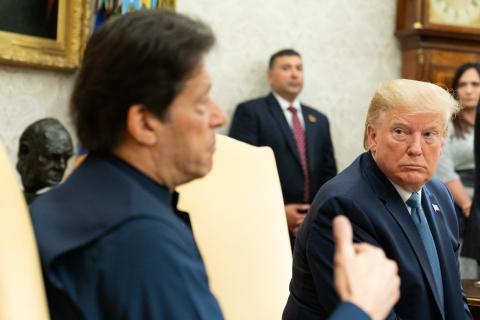On 28 June, Financial Action Task Force (FATF) put Pakistan on its “Grey List”. The country now has up to 15 months to improve its control of terror financing and money laundering, otherwise it will be placed on the FATF “Black List”.
FATF is a global body established in 1989 to control money laundering and terrorist financing. The Grey List comprises those countries who have flaws in their financial regulation but are acting to improve the problems. The Black List comprises countries that have flaws in their system, yet do not plan to address them. Now that Pakistan is on the Grey List, its international financial transactions will be strictly monitored, creating further problems for an already struggling economy.
Reasons for Grey-Listing
The proceedings of the FATF meeting in June speak volumes about diplomatic isolation of Pakistan. When the motion was raised to name Pakistan on the Grey List, even the country’s staunchest foreign allies China and Saudi Arabia did not oppose it. China is funding the US$62 billion China-Pakistan Economic Corridor (CPEC) and a former Pakistani general leads Saudi Arabia’s Islamic Military Counter Terrorism Coalition (IMCTC). Yet even such close relationships could not persuade them to defend murky financial system of Pakistan.
Although FATF did not specifically mention the reasons that led to Pakistan being put on the Grey List, to many analysts the reasons are clear. There are allegations by India, backed by US, that Pakistan funds and supports Lashkar-e-Taiba terrorist outfit that has carried out terrorist attacks in India, which Pakistan denies. The US also accuses Pakistan of covert funding and support for the Taliban insurgency in Afghanistan. Again, Pakistan denies these charges but both US and India used them as a pretext to pressure FATF name Pakistan on the Grey List.
Impact on Pakistan’s economy
In order to comply with the FATF recommendations, Pakistan not only has to stop money laundering and terror financing, but it also has to fix the loopholes in its financial system which allow such practices to go unchecked. Pakistan must ensure all internationally designated terrorists are prevented from using any financial resources. During the next 15 months, Pakistan has to show FATF it has taken concrete steps to make a case to remove its name from Grey List.
Presently, Pakistan’s economy is in a terrible shape and being on the Grey List will take a further toll. Currently, Pakistan’s trade deficit is $37 billion and foreign loans make up 24% of the GDP. Pakistan is expected to pay up to $8.3 billion annually in debt servicing. Being on the Grey List means that it will now be harder for Pakistan to borrow money from foreign countries to meet its existing foreign loan repayment obligations. Foreign money lenders will be hesitant to lend money to Pakistan when FATF has raised questions about the transparency of its financial system.
Pakistan will be left with no choice but to ask International Monetary Fund (IMF) for help. The IMF can help Pakistan with loans that can be used to repay the existing foreign loans. But such an arrangement will lead to a huge problem for Pakistan. As per the rules of IMF, Pakistan has to share complete details of all its foreign funding with IMF, including the Chinese funded China-Pakistan Economic Corridor (CPEC).
Secret arrangements
So far the details of CPEC projects have been kept secret. Yet if Pakistan has to use IMF option then it will be left with no choice but to reveal the CPEC project details. This could be a major setback for both China and Pakistan, with experts allege that CPEC project agreements have not been disclosed because they might be detrimental for long term interests of Pakistan.
China, although it did not oppose Pakistan’s inclusion in Grey List, has offered some diplomatic support. In a press briefing, the Chinese Foreign Ministry urged the international community to recognise the sacrifices made by Pakistan in fighting terrorism. China also granted Pakistan a loan of $1 billion days after the Grey List was announced to help Pakistan boost its foreign currency reserves.
The last time Pakistan was on the FATF Grey List in 2012, it took three years to get off it. The question is how long it will take Pakistan to get off this time and rely on Chinese loans to avoid the IMF. If Pakistan has left with no option but to go to IMF, then the “secrets” of CPEC will be revealed.
Ultimately, the question is to what extent is China ready to go to help Pakistan? Given its stakes in CPEC, it is highly likely that China will lend money to Pakistan to avoid the IMF option and keep the CPEC agreements secret.

